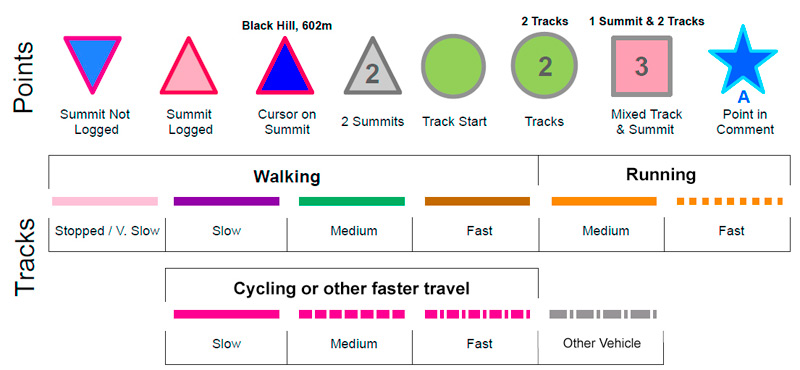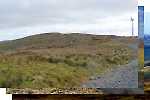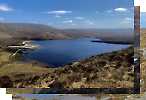Donation Request 2024
You do not have to be logged in to donate.
DONATE
Members and Supporters, the MountainViews Committee requests your help to meet the costs of the website and of other activities such as insured events or publications.You do not have to be logged in to donate.
Welcome to MountainViews
If you want to use the website often please enrol (quick and free) at top right.
If you want to use the website often please enrol (quick and free) at top right.
Overview
For more map options click on any overview map area or any detail map feature.
Detail Map Features
Find Suggested Walks
Find hill, mountain, island, coastal feature.
Videos








Recent Contributions
 Get Notifications
Get Notifications
 Get Notifications
Get Notifications
Mulnanaff: Longish walk up windfarm road.
Crocknapeast: Long walk up windfarm roads.
Double bag mostly on windfarm tracks.
Good, relatively easy double bag
Binbane NE Top: Simple bag from its neighbouring top.
Binbane: Steepish approach to relatively easy Carn.
Lake District: Dale Head Horseshoe
Crucknaree: Magnificent views!
Lake District: Coledale Horseshoe
Dunranhill: Sika deer and sitka spruce
Crocknasharragh: Impressive views on initial ascent.
Longish walk to isolated top
Conditions and Info
Use of MountainViews is governed by conditions and a privacy policy.
Read general information about the site.
Opinions in material here are not necessarily endorsed by MountainViews.
Hillwalking is a risk sport. Information in comments, walks, shared GPS tracks or about starting places may not be accurate for example as regards safety or access permission. You are responsible for your safety and your permission to walk.
See the credits and list definitions.
Use of MountainViews is governed by conditions and a privacy policy.
Read general information about the site.
Opinions in material here are not necessarily endorsed by MountainViews.
Hillwalking is a risk sport. Information in comments, walks, shared GPS tracks or about starting places may not be accurate for example as regards safety or access permission. You are responsible for your safety and your permission to walk.
See the credits and list definitions.
Video display
Dublin
Area S: Dublin South East Subarea
Place count in area: 18,
OSI/LPS Maps: 43, 50, 56, AWW, EW-DM, EW-WE, EW-WW
Highest place: Kippure, 757m
Kippure, 757m
Maximum height for area: 757 metres,
Maximum prominence for area: 262 metres,
Places in area Dublin:
N: Howth: Ben of Howth 171m
Ben of Howth 171m
N: Naul: Knockbrack 176m
Knockbrack 176m
S: Dublin South East: Carrickgollogan 275.2m
Carrickgollogan 275.2m Glendoo Mountain 585.1m
Glendoo Mountain 585.1m Killiney Hill 153.5m
Killiney Hill 153.5m Knocknagun 555.3m
Knocknagun 555.3m Montpelier Hill 383m
Montpelier Hill 383m Prince William's Seat 553.5m
Prince William's Seat 553.5m Tibradden Mountain 466.2m
Tibradden Mountain 466.2m Two Rock Mountain 536m
Two Rock Mountain 536m
S: Kippure & Kilbride: Corrig Mountain 617.1m
Corrig Mountain 617.1m Kippure 757m
Kippure 757m Seahan 647.3m
Seahan 647.3m Seefin 620.6m
Seefin 620.6m Seefingan 722.9m
Seefingan 722.9m
S: Saggart: Cupidstown Hill 378.6m
Cupidstown Hill 378.6m Knockannavea 400.8m
Knockannavea 400.8m Saggart Hill 396.9m
Saggart Hill 396.9m
Note: this list of places includes island features such as summits, but not islands as such.
Highest place:
 Kippure, 757m
Kippure, 757mPlaces in area Dublin:
N: Howth:
 Ben of Howth 171m
Ben of Howth 171mN: Naul:
 Knockbrack 176m
Knockbrack 176mS: Dublin South East:
 Carrickgollogan 275.2m
Carrickgollogan 275.2m Glendoo Mountain 585.1m
Glendoo Mountain 585.1m Killiney Hill 153.5m
Killiney Hill 153.5m Knocknagun 555.3m
Knocknagun 555.3m Montpelier Hill 383m
Montpelier Hill 383m Prince William's Seat 553.5m
Prince William's Seat 553.5m Tibradden Mountain 466.2m
Tibradden Mountain 466.2m Two Rock Mountain 536m
Two Rock Mountain 536mS: Kippure & Kilbride:
 Corrig Mountain 617.1m
Corrig Mountain 617.1m Kippure 757m
Kippure 757m Seahan 647.3m
Seahan 647.3m Seefin 620.6m
Seefin 620.6m Seefingan 722.9m
Seefingan 722.9mS: Saggart:
 Cupidstown Hill 378.6m
Cupidstown Hill 378.6m Knockannavea 400.8m
Knockannavea 400.8m Saggart Hill 396.9m
Saggart Hill 396.9mNote: this list of places includes island features such as summits, but not islands as such.


Bedrock type: Pale grey fine to coarse-grained granite, (Type 2e equigranular)
Cloch na gCon, 'stone of the dogs', is the name of the remarkable boulder near the summit [PNCW]. Knocknagun is the 404th highest place in Ireland.
Linkback: https://mountainviews.ie/summit/351/
COMMENTS for Knocknagun (Cnoc na gCon) 1 2 3 Next page >>  Follow this place's comments
Follow this place's comments

|

 Collaborative entry
Collaborative entry Collaborative entry
Collaborative entry Colin Murphy
Colin Murphy
 Colin Murphy
Colin Murphy
 Collaborative entry
Collaborative entry Collaborative entry
Collaborative entry paddyhillsbagger
paddyhillsbagger
 hibby
hibby
 Colin Murphy
Colin Murphy
 Colin Murphy
Colin Murphy
 Visit our Facebook page.
Visit our Facebook page.

